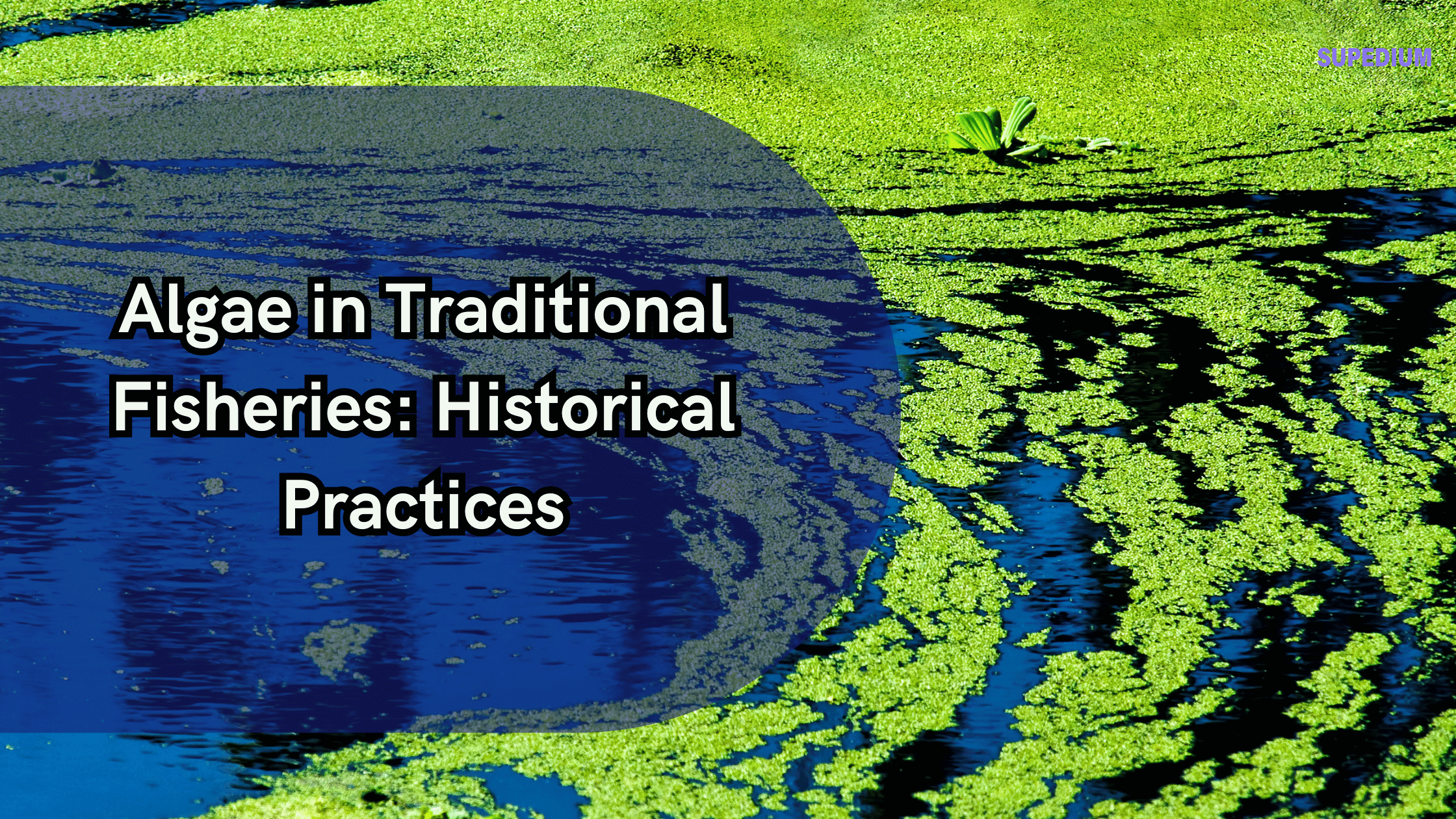Table of Contents
![]()
Introduction
Algae, simple photosynthetic organisms found in aquatic environments, have played a crucial role in human history, particularly in traditional fisheries. These organisms, ranging from microscopic phytoplankton to large seaweeds, have been integral to various cultures’ subsistence and aquaculture practices. Understanding the historical role of algae in traditional fisheries provides insight into ancient practices and their ongoing relevance.
Historical Context of Traditional Fisheries
Traditional fisheries date back to early human societies, where fishing practices were closely intertwined with the natural environment. Early methods, including simple nets, hooks, and traps, were designed with minimal impact on aquatic ecosystems. These practices were often guided by a deep understanding of local environments, including the role of algae.
In many ancient cultures, algae were not merely incidental to fishing but were actively integrated into aquaculture systems. Archaeological evidence, such as ancient texts and remnants of aquaculture facilities, reveals that algae were used in various ways to support and enhance traditional fisheries. For instance, early Chinese aquaculture systems incorporated algae to maintain water quality and support fish populations.
Types of Algae Used in Traditional Fisheries
- Macroalgae (Seaweeds)
- Red Algae (Rhodophyta): Red algae, including varieties such as Nori and Dulse, have been used in traditional fisheries for both food and aquaculture. Nori, for instance, has been cultivated in Japan for centuries, serving as a primary food source and as feed for cultivated fish.
- Brown Algae (Phaeophyta): Brown algae like Kelp and Wakame have been vital in aquaculture, particularly in East Asia. Kelp, with its rapid growth and high nutrient content, has been used as a natural feed for fish and a habitat enhancer.
- Green Algae (Chlorophyta): Green algae, such as Sea Lettuce, have been used for their nutritional value and their role in enhancing water quality. Traditional practices often involved harvesting these algae for human consumption and to improve conditions for farmed fish.
- Microalgae
- Phytoplankton: In ancient marine aquaculture, microalgae played a role in sustaining fish populations. Early aquaculture systems, particularly in regions like ancient China, involved the cultivation of phytoplankton to support the food web for farmed fish.
- Cultivation Practices: Historical records suggest that microalgae were cultivated in specialized ponds or tanks to maintain water quality and provide essential nutrients for fish.
Traditional Practices Involving Algae
- Algae as Food Algae have been a staple in many traditional diets. In Japan, Nori and Wakame are integral to cuisine, with methods of preparation including drying and roasting. These practices date back centuries and are deeply rooted in cultural traditions. Similarly, in Polynesia, seaweeds were consumed as a nutritious addition to the diet, reflecting their ecological significance and dietary value.
- Algae in Aquaculture
- Feed for Farmed Fish: Traditional aquaculture systems often utilized algae as feed. For example, kelp was used in East Asian aquaculture to provide essential nutrients to farmed fish, enhancing their growth and health.
- Water Quality Management: Algae also played a role in maintaining water quality in ancient aquaculture systems. By absorbing excess nutrients and providing habitat for beneficial microorganisms, algae helped sustain a balanced aquatic environment.
- Algae in Fishing Techniques
- Attracting Fish: Algae have been used in various traditional fishing techniques to attract fish. In some cultures, seaweed beds were strategically placed to lure fish into traps or nets, utilizing the natural attraction of algae.
- Habitat for Juvenile Fish: Algae provide crucial habitat for juvenile fish, offering shelter and food. Traditional fisheries often recognized the importance of maintaining healthy algal populations to support fish populations throughout their life cycles.
Case Studies from Different Cultures
- East Asia
- Japan: In Japan, the cultivation of Nori and Wakame has a long history, with practices dating back to ancient times. Nori, in particular, has been integral to Japanese cuisine and aquaculture, with detailed methods of cultivation documented in historical records.
- China: Ancient Chinese aquaculture systems incorporated algae to support fish populations. Early texts describe the use of algae in maintaining water quality and providing feed for farmed fish.
- Polynesia
- Hawaii: Traditional Hawaiian aquaculture systems used seaweed to enhance fish farming. The cultural significance of algae in Polynesia is reflected in the use of seaweed in rituals and as a dietary staple.
- Native American Practices
- North America: Coastal Native American tribes utilized algae in their fishing practices. Seaweeds were used both as food and in fishing techniques, reflecting a deep understanding of their ecological role.
Impacts of Historical Algae Practices
- Ecological Impacts Traditional algae practices contributed positively to local ecosystems. The use of algae in aquaculture helped maintain water quality and supported fish populations, demonstrating an early understanding of ecosystem management. These practices were often sustainable, reflecting a balance between human needs and environmental health.
- Cultural Impacts Algae have played a significant role in cultural identity and traditions. The integration of algae into diets, rituals, and fishing techniques reflects their importance in cultural heritage. Modern practices continue to be influenced by traditional knowledge, highlighting the enduring relevance of these historical practices.
Transition to Modern Practices
As modern fisheries and aquaculture evolved, the role of algae has shifted. Advances in technology and changes in environmental management practices have altered traditional approaches. However, there is a growing recognition of the value of traditional knowledge in modern aquaculture, with efforts to preserve and integrate historical practices into contemporary systems.
Conclusion
The historical role of algae in traditional fisheries provides valuable insights into ancient practices and their impact on ecosystems and cultures. Understanding these practices highlights the importance of algae in sustaining traditional aquaculture and their ongoing relevance in modern practices. As we move forward, preserving traditional knowledge and incorporating it into contemporary practices will be crucial for maintaining sustainable and culturally significant fisheries.
Share This





Be the first to comment